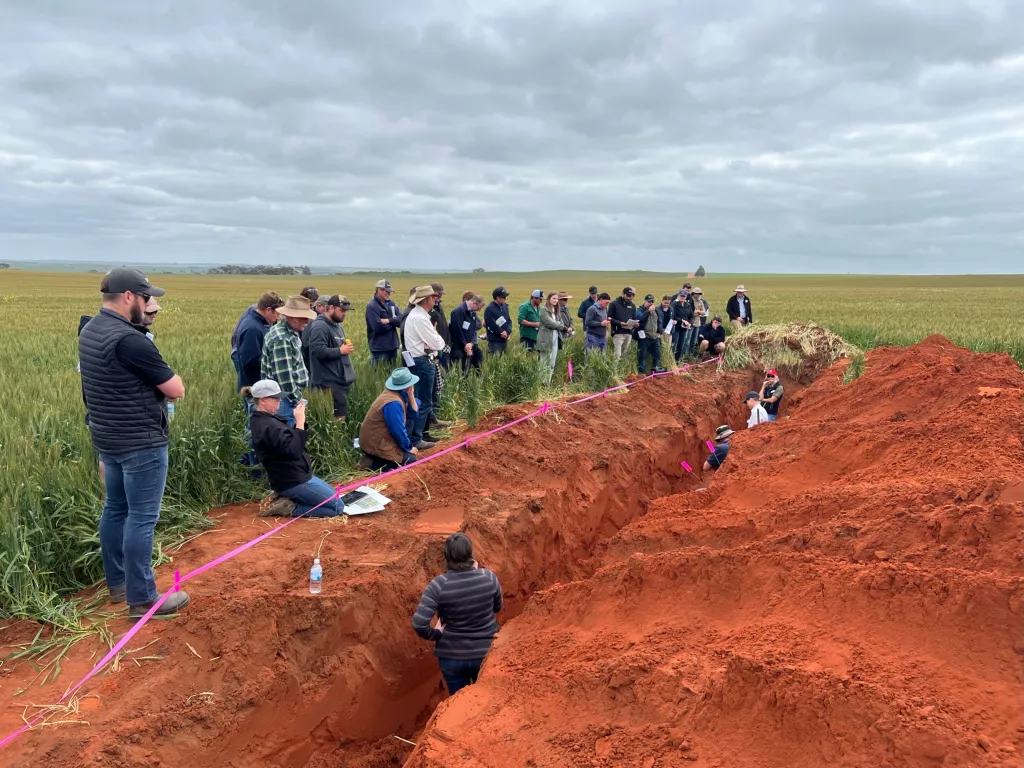Early results from the K Extension Project trial site
By Kate Parker & Simon Kruger, WMG Projects Team
Growers in the West Midlands region have identified potassium (K) deficiency as an ongoing constraint limiting yield potential in sandy soils. Whilst growers agree that replacement potassium was likely being underapplied over the years, the majority also thought potassium needed further research, mainly around response by soil types, application rates and the ability of some plants to recycle K from depth.
2023 findings in the GRDC funded WMG K Extension Project showed significant amounts of potassium in the subsoil of more than 10 sites across the region, highlighting an untapped resource that could support alternative fertiliser management strategies. This subsoil potassium presents an opportunity for growers to utilise deeper soil layers to meet their crops’ K requirements.

This year, the K Extension Project is investigating further into the regions potassium needs and looking at different crops and their ability to bring up subsoil K in both ripped and unripped soils. We will be looking at 5 different crops; canola, lupin, serradella*, short season wheat and medium season wheat; with randomised six plots per crop and half of the treatments deep ripped 3 days post sowing.
*In project farmer discussion meetings, serradella was identified as a crop with the potential to bring potassium up from deep soil levels, although having limited suitability in cropping only systems.
Early Results:
As shown in the below table, rainfall in the January to June period for the site has been below the long-term average with the break of the season occurring in the last couple of days in May.
| Jan | Feb | Mar | Apr | May | Jun | |
| 2024 | 0.0 | 0.0 | 9.6 | 7.4 | 44.6 | 93.6 |
| LTA (1971-2024) | 11.8 | 13.7 | 17.4 | 26.9 | 76.2 | 96.8 |

Figure 1 shows the plant establishment counts for each of the treatments. Early post-emergent (EPE) deep ripping is known to reduce crop emergence. EPE deep ripping was recently covered in an article last month. The site was ripped perpendicular to the direction of sowing resulting in an increased difficulty during sampling due to rows shifting. Canola and Lupin show lower plant numbers due to a lower seeding rate. We predicted the greatest impact from deep ripping would be on serradella, then canola -> wheat -> lupin, due to the size of the seeds, however found that serradella and wheat were instead most affected with lupin and canola relatively insignificant difference as noted by the overlapping error bars.
These are very early days in the trial and monitoring of the site will continue across the season. Keep an eye out for project updates and crop walks in the coming months as we explore further into the potassium requirements for the region.












